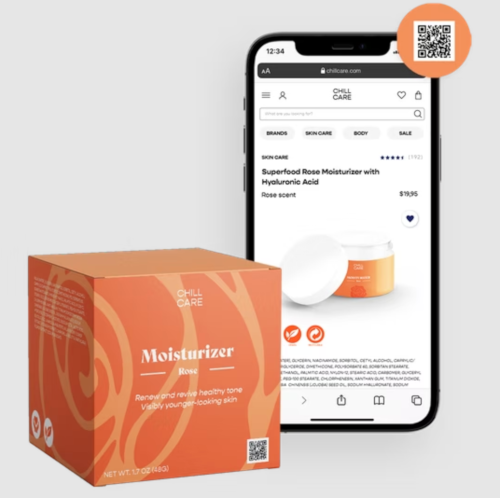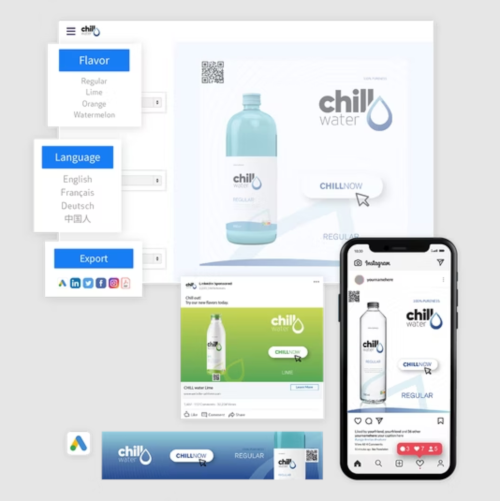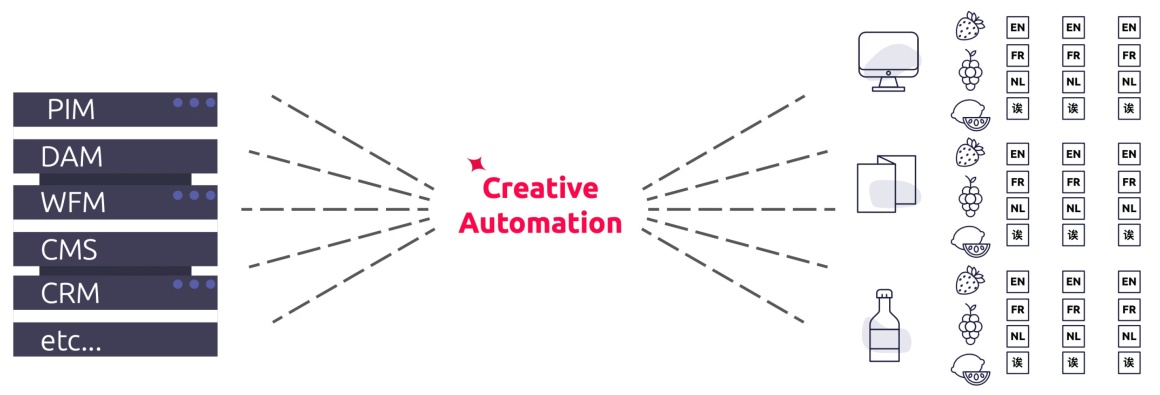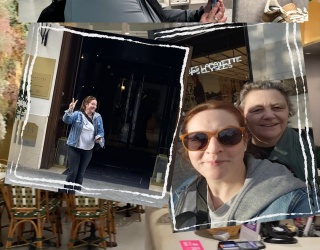The demands on retail creative production are huge. From web to print, PoS to packaging, social to paid advertising, and more, there are endless pieces of visual content needed to power a large, multi-channel retail brand.
Plus, nobody is unaware of the significant impact that the last two years has had on the retail industry and consumer behavior. With these shifts, which we will discuss in a moment, will come greater demands on the marketing and creative teams to deliver more, and more targeted, content.
Here are the three major trends your marketers and creative content team will need to adapt to.
1. The online shopping boom
We saw four years of e-commerce growth in a single quarter, according to Colliers, as nearly 150 million people shopped online for the first time in 2020. That’s mind blowing!
Experts believe it is possible that 16.3% of total retail sales will be conducted online as the anticipated ‘roaring ‘20s consumerism’ kicks in. But notice that this percentage also reveals the significant role of stores, which still deliver over 80% of all retail sales. So don’t overlook their importance. We’ll discuss more about the role of stores and their marketing needs shortly.
Plus, despite recent setbacks, the retail industry is forecast to grow more than 5% in the next five years, bringing with it increased competition and ever-growing demand on marketing teams that are often struggling to scale with brand growth as it is.

This boom in online sales has forced retail brands to think digital-first, whether that’s becoming digital by design or reimagining the customer journey experience to include more digital touch points.
Could this be the start of brands truly using omnichannel marketing to its full potential? We’ll talk more about that in a moment.
2. Scaling of personalization in marketing
As more people shop online, a whole world of data, and therefore opportunities, for personalizing the retail experience has opened up.
As a result of changed consumer behaviors during the pandemic, there is now a much greater emphasis on personalization of shopping experiences, products that help support mental and emotional wellbeing, and ‘touchless’ purchases.
Personalization enables marketing professionals to tailor a campaign or piece of marketing collateral based on data/knowledge the team has on generic personal preferences or commonly shared traits of their customers. When done right, it will result in customer developing an affinity for your brand, favoring your product or service over any other competitor.
Personalization is not a new trend, but it still has not reached the maturity often aspired to. And now it has been brought back to the fore by the new consumer behaviors. With the heightened expectations of personalization from customers, fueled in part by the individualized recommendations found in digital services like Netflix, this will shift from a trend to an essential part of retail.
However, this requires even more variations of every retail marketing visual, which is a tedious, manual task for your graphic designers and creatives. The creative production process needs reinventing. Automation – one of my favorite topics – is the key to rapid variant production.
3. Increased localization driving a need for better omnichannel marketing
The third retail trend we’ve seen the pandemic drive is a greater reliance on local retailers.
Deloitte research suggests that the enforced local shopping habits created during lockdowns could lead to a polarization in the retail market: destination stores versus “hyper-local shopping”. Destination stores will continue to attract customers from beyond their immediate locale and hyper-local shopping could create an exciting elevation of local retailers, both online and offline.
As brick-and-mortar stores reevaluate their position in the buying journey and customer experience, could this encourage a return to the high street?
Localization of retail marketing assets will start to take on a new importance as stores take a central role and as new markets are reached online.
The impact on retail marketing and creative teams will be the need for improved localization of retail marketing assets. This is often done by local marketing teams that take centralized artwork from a PIM or DAM and adapt it as they see fit to the local market. But this often compromises the brand look and feel and tone of voice. The best localization should appear to have been developed by the brand in the local culture.

The omnichannel experience
As both online retail booms and local shopping is elevated, omnichannel marketing will rise in priority on brands’ strategic plans.
Blending the online and offline customer shopping experiences will be at the heart of delivering optimal, personalized, and localized shopping experiences.
Omnichannel marketing will enable local stores to thrive by driving online customers to the store while empowering consumers with the right online information at the point of sale in a store, so they can make the best purchasing choice for them. This two-way street in retail marketing holds exciting possibilities.
How these trends impact retail marketing and creative content teams
Marketing teams will be expected to deliver impactful, creative content across all channels at greater speed and scale as retailers maintain a high product turnover rate and look to increase brand appeal.
Here are ways your team processes will be forced to change as a result of the above retail trends coming to the forefront.
Greater volume
With the scaling of retail comes the need to scale your brand. Simply, this means more of everything. As your retail brand reaches new customers in new locations and from varying demographics, you will be required to create more creative assets – and more versions. Your teams only have so many hours in a day and you know they are already stretched.
To reach true rapid personalization at scale, hiring more people is not the answer. There is an automated solution for that.
More variations
To deliver greater personalization and localization of creative assets, each asset needs to be rapidly adapted to fit multiple formats – social media, print, online display ad, etc. – to deliver a true omnichannel campaign that reaches multiple demographics and regions. But creating multiple variations is a slow and manual process. The process is not designed to scale.
The reemphasized trends of personalization, localization, and omnichannel marketing will force creative content teams to reinvent their creative production processes to scale.
How to rapidly adapt your content creation processes – with automation
Hiring more people, particularly to deliver on the repetitive and manual elements of creating multiple variations of assets, isn’t a sustainable solution to the ever-growing demands on retail marketing teams. Nor is limiting your brand’s growth. And your team just doesn’t have more hours in the day.
So what is the solution to the rapid scaling of retail asset creation?
In every sector, automation is transforming repetitive processes. And creative asset production is no different. Automation excels in scaling repetitive tasks, like creating multiple variations of retail creative content in predefined formats or languages. And all those last-minute changes (like price) before taking an ad or campaign live? Automated across multiple versions globally in minutes rather than hours – to name a few.

All information can also be found here.










